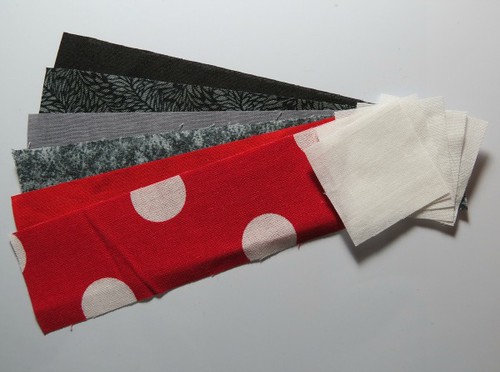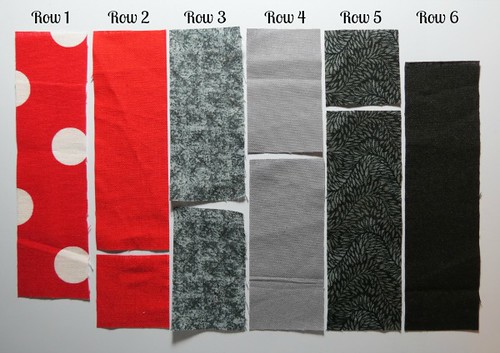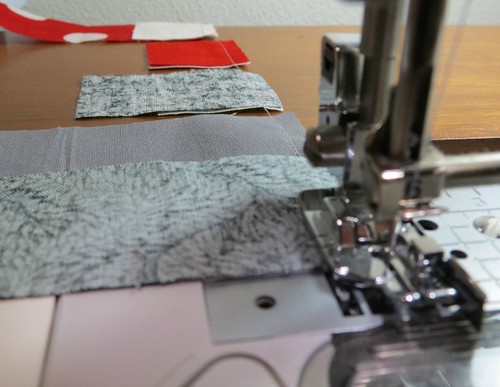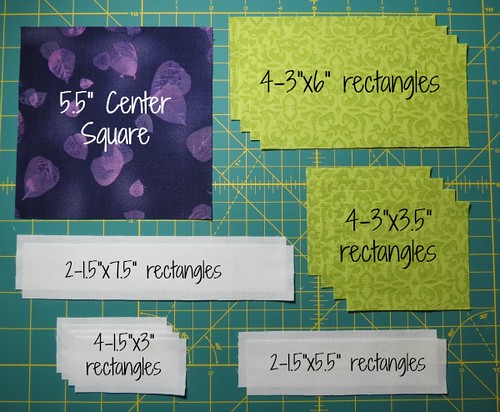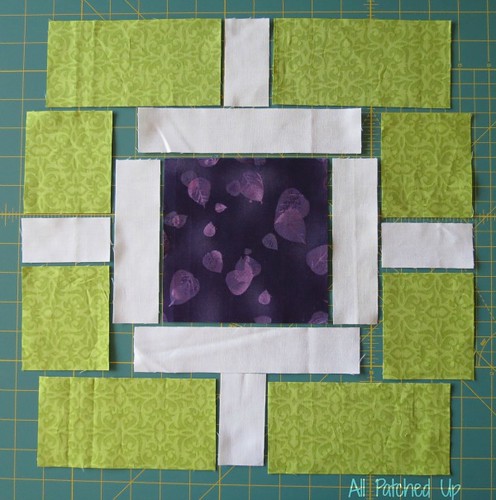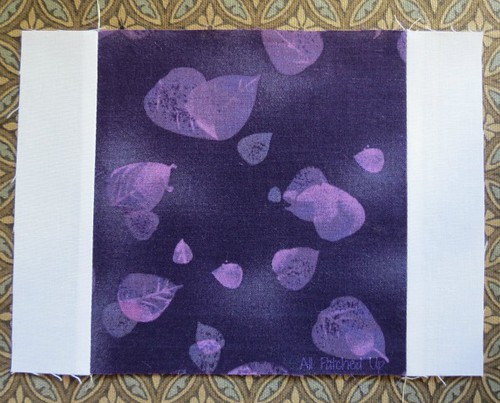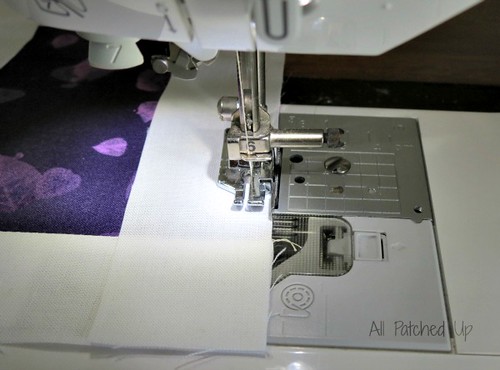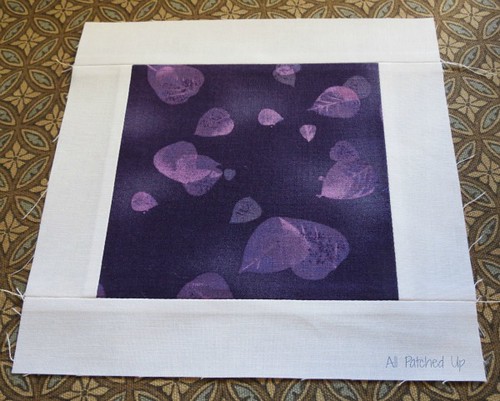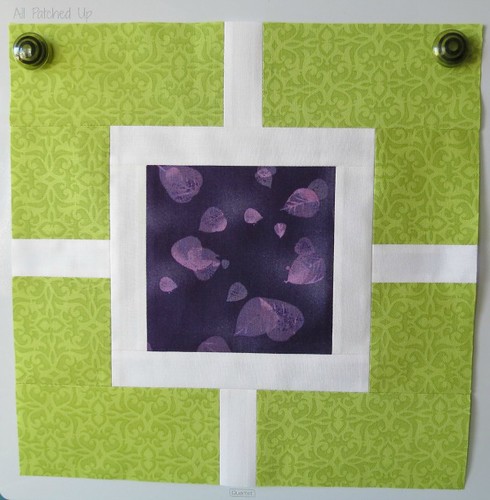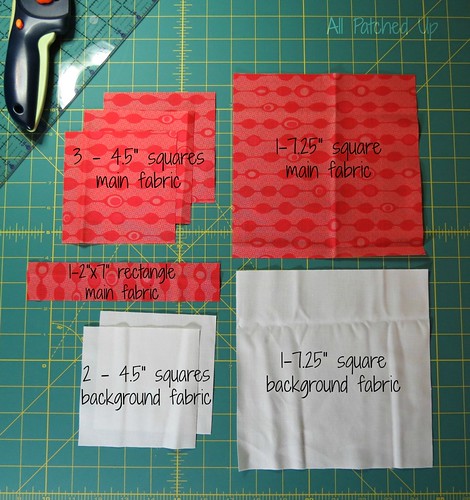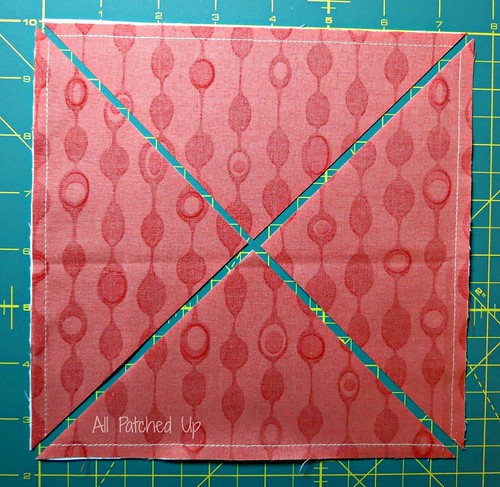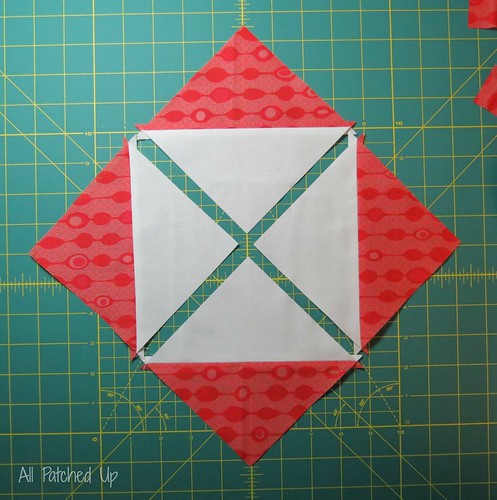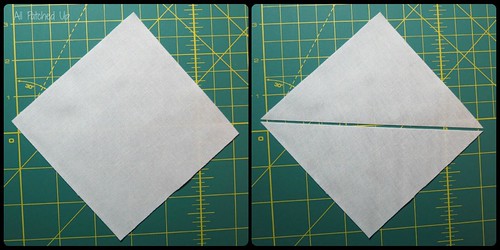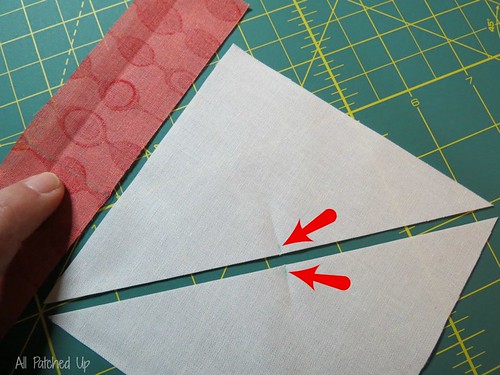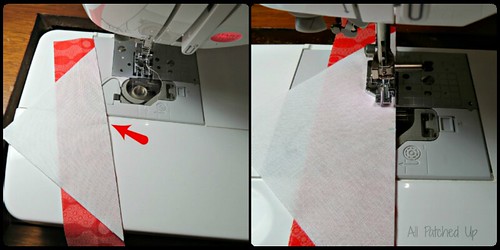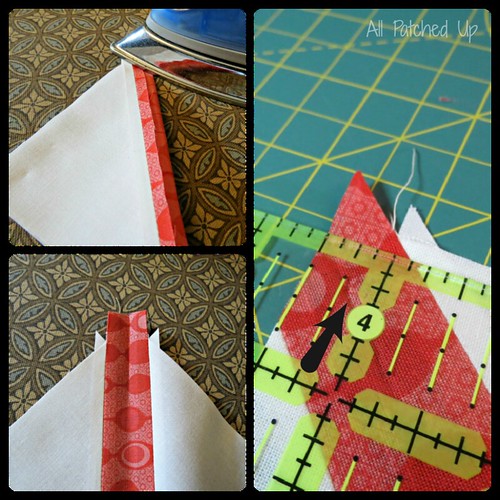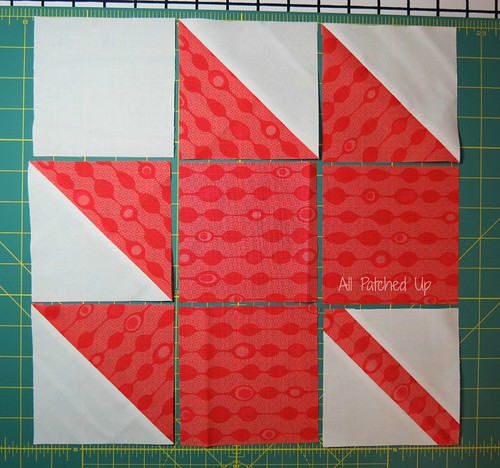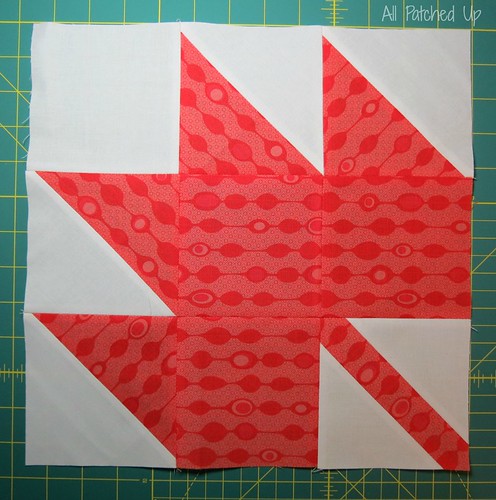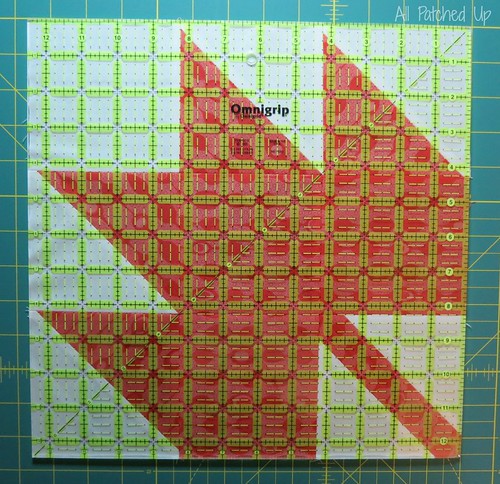Update: Just wanted to post Cathie's chosen colors. She's asking for a scrappy block with strips in pinks, purples, yellows, aqua, blues, and greens. For the solid squares, she'd like you to use pink. She prefers a bright pink if possible.
I'm not real sure of the original name of this block, or if there is one. I've seen under a couple of names, once called a mock log cabin, but upon a search for that block name, I get a mess ( a whole bunch of blocks in different variations, most of them not like this one). heh So....I'm calling this block Stepping Stone Path. (Credit for the name goes to my wonderful friend True...she doesn't have a blog that I'm aware of, but you can find her over on Threadbias. :)
This block is fairly easy to construct. Seriously!! It went together so quickly and easily that I often forgot to stop and snap a photo of each of the steps I needed for this tutorial. So, I'll apologize now for the lack of photos in this one.
Keeping all your strips straight and in order will be the most important part. I actually had more difficulty writing out the directions for all of you than I did making the block...have to make sure it all makes sense for you guys! lol Because of that, I'm going to tell you before we begin to be sure to look to the photos if something doesn't make sense. They will still help a great deal...altho the grey gloomy weather we've been having isn't helping me take nice clear shots....the ones I remembered to snap that is!
So, for this block you will need:
6 - 2.5" white squares (pink squares if you're making this for the bee)
6 - 2.5" x 11" strips in your chosen fabrics/colors
Cutting:
The easiest way to keep this all straight is to lay out the strips in the order you'd like them to end up in your final block. I will refer to the strips you need to work with by row. See the following diagram and keep in mind the way I've labeled them....row 1 at the far left counting over to row 6 at the far right.
Take the Row 1 and Row 6 strips and cut them down to 10.5"
Take the Row 2 and Row 5 strips and cut a 2.5" square off the end of each. This should leave you with a 2.5" square and an 8.5" strip.
Take the Row 3 and Row 4 strips and cut a 4.5" strip off the end of each. This should leave a 6.5" strip of each as well.
(Refer to the photo above if the above cutting instructions do not make sense or are difficult to understand. Basically, you'll be cutting the strips where you will sew the white squares.)
After you've cut all your strips, lay out your block. This will help ensure you sew all the strip pieces to the correct squares. Use a scant 1/4" seam throughout.
This is one place I forgot to take a photo...of the block laid out properly, sorry! But, between the photo above and the final one of the completed block at the end of this tute, you should be able to figure out the layout easily. You want to take your strips and separate them where they've been cut and lay your white squares in between. And then of course 1 white square at the bottom of row 1 and top of row 6.
As I mentioned, I used a chain piecing method to sew these blocks. Chain piecing always speeds things up. and anything that speeds up the process is a good thing in my book!!
I also forgot to take a photo of the next step. Well, I took pics of my doing the chain piecing, like the one above, so you could see that, but forgot to snap the photo of the square sewn to just one part of the row. Hopefully you can still follow along.
You will begin by sewing the top piece of each strip to the square. Let the chain piecing begin! I start by sewing the Row 1 strip to it's square, but I don't cut my threads. Instead I sew a bit of blank space (no fabric) and then I'll take the top part of Row 2's strip and sew it to that row's square. Again without cutting the thread, I do the same for Rows 3, 4, 5 and 6. After finishing the row 6 strip you can go ahead and cut your threads. Then snip the threads between each of the strips to separate them before setting and pressing your seams. Lay the square/strip units back where they belong.
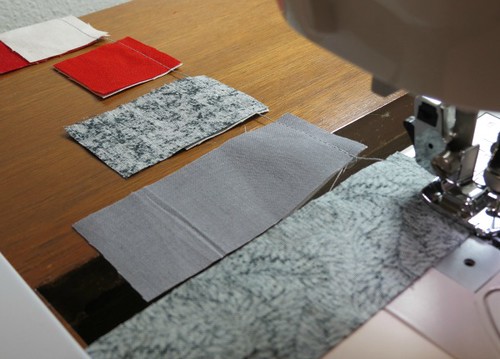 |
| You can see the blank space I leave between the strips while chain piecing. |
You will now sew the bottom pieces of the strips to the coordinating squares just as you did the tops. Remember to set and press your seams. You will only have 4 strips to sew this time however as rows 1 and 6 only have one piece.
All 6 rows should now be sewn together.
You just need to finish by sewing the strips together.
Now, before we continue, there is one thing I'll mention. I don't often use pins. They hate me...I swear!!! However, when I need to line up seams I do bite the bullet and use them. The squares in this block and the way they line up on the diagonal is an important part of the overall effect the block gives so it's important they line up properly. I use pins to ensure the seams are lined up with the previous row.
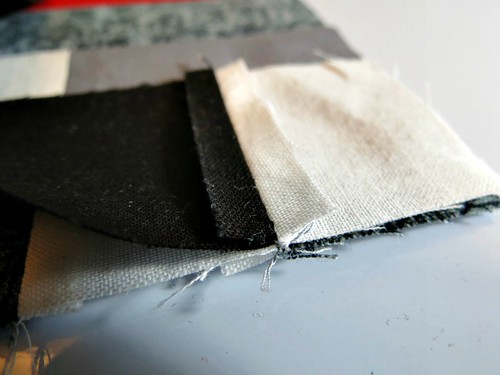 |
| Lining up my seams. |
Start by sewing Row 1's strip to Row 2....lining up the seams. Set and press your seams. Continue sewing the remaining rows...3 then 4 and so on til you've sewn them all together.
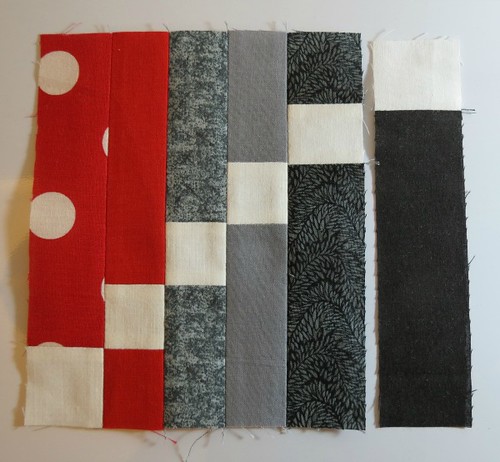 |
| 5 of the 6 rows sewn together. |
When all your strips have been sewn together, here's what you should end up with.
 |
| Completed block! |
All that's left to do is make sure it's all square and trimmed up and you're finished!
Now, that wasn't so bad was it?
I hope you all enjoy making this block, I know I did. It was quick, painless and done before I knew it. I may just make a few more of these. Just what I need!! *snicker*

*Disclaimer: I did this tutorial to help my hivemates with their bee blocks, along with anyone else that may want to make these blocks. While the tutorial is my own work, the design is not. If this block is your original design, please email me so that I can either give you credit or remove the post, at your request.*

